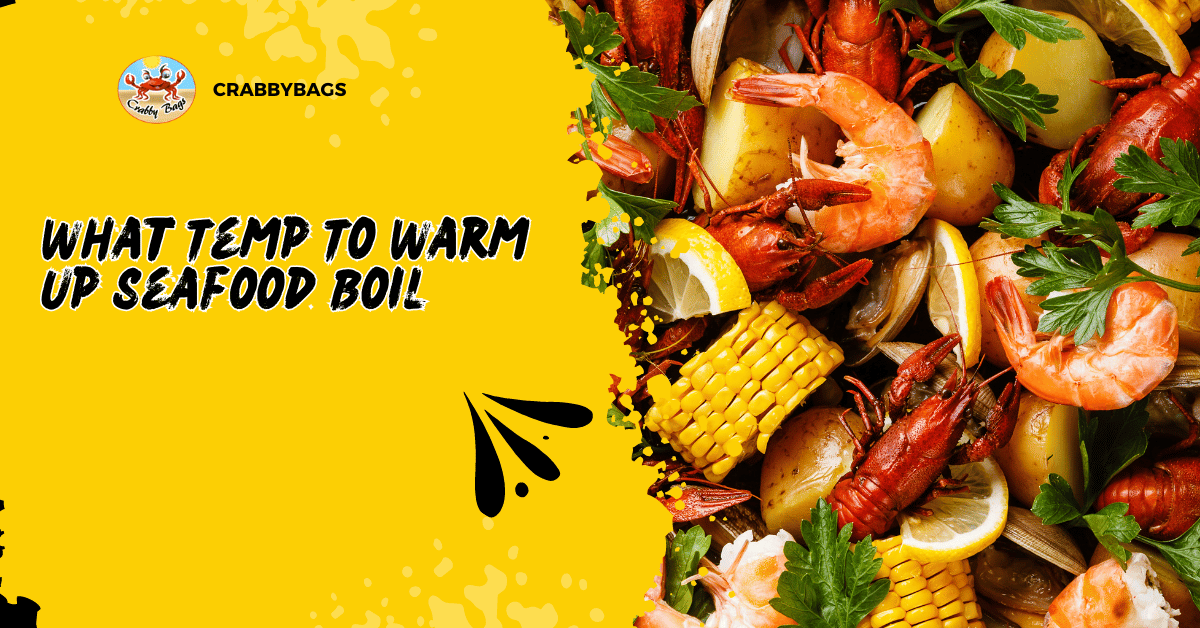
What Temp To Warm Up Seafood Boil
|
|
Time to read 4 min
|
|
Time to read 4 min
Seafood boils are a beloved culinary tradition combining delicious seafood, vegetables, and spices in one satisfying meal. But what happens when you can't finish it all in one sitting?
Knowing the right temperature and methods for warming up your seafood boil can make all the difference between a disappointing leftover experience and a meal that is just as delicious as when it was first served.
A typical seafood boil is a medley of flavours and textures, combining various types of seafood with vegetables and spices. The key components often include:
The beauty of a seafood boil lies in its communal nature and the way the flavours meld together during cooking.
This unique combination also presents some challenges regarding reheating, which is why understanding the proper techniques is crucial.
Reheating seafood boils isn't just about warming it up; it's about preserving the flavour and texture and, most importantly, ensuring food safety.
Seafood is particularly prone to bacterial growth if not handled correctly, making proper reheating essential.
Moreover, overheating can lead to a loss of delicate seafood flavours and aromas and potentially turn the texture rubbery or tough.
Before diving into the specifics of reheating a seafood boil, it's important to understand some general guidelines for reheating seafood:
These guidelines will help you maintain food safety while preserving the quality of your seafood.
The optimal temperature range for reheating a seafood boil is between 165°F and 175°F (74°C to 79°C).
This range is ideal because it:
You'll achieve a safe and delicious reheated seafood boil by sticking to this temperature range.
You can use several methods to reheat your seafood boil, each with its advantages and disadvantages. Let's explore three popular techniques:
1. Stove top Method
The stovetop method is often considered the best way to reheat a seafood boil as it allows for more control over the heating process.
Here's how to do it:
This method helps maintain moisture and flavour while allowing for even heating. However, it does take more time and effort than other methods.
The oven method is great for larger quantities and can produce evenly heated results.
Follow these steps:
This method is hands-off and good for larger portions, but it can dry out the seafood if you're not careful.
While not ideal, the microwave can work in a pinch for small portions.
Here's how to do it:
This method is quick and convenient but can lead to uneven heating and may affect the texture of some components.
To ensure the best results when reheating your seafood boil, keep these tips in mind:
By following these tips, you'll be able to enjoy your reheated seafood boil almost as much as the original meal.
When reheating your seafood boil, be sure to avoid these common pitfalls:
Proper storage is crucial for food safety and quality. Refrigerate leftovers within two hours of cooking, store in an airtight container, and consume within 3-4 days. If you don't eat it within that time frame, consider freezing.
If you're looking to switch things up, try these creative ideas for your leftover seafood boil:
Reheating your seafood boil doesn't have to be a daunting task. By following the right temperature guidelines (165°F to 175°F) and choosing the appropriate method for your needs, you can enjoy your leftovers almost as much as the original meal.
Remember to prioritize food safety, preserve moisture, and avoid overcooking for the best results. With these tips and techniques, you can savour every last bite of your delicious feast!



